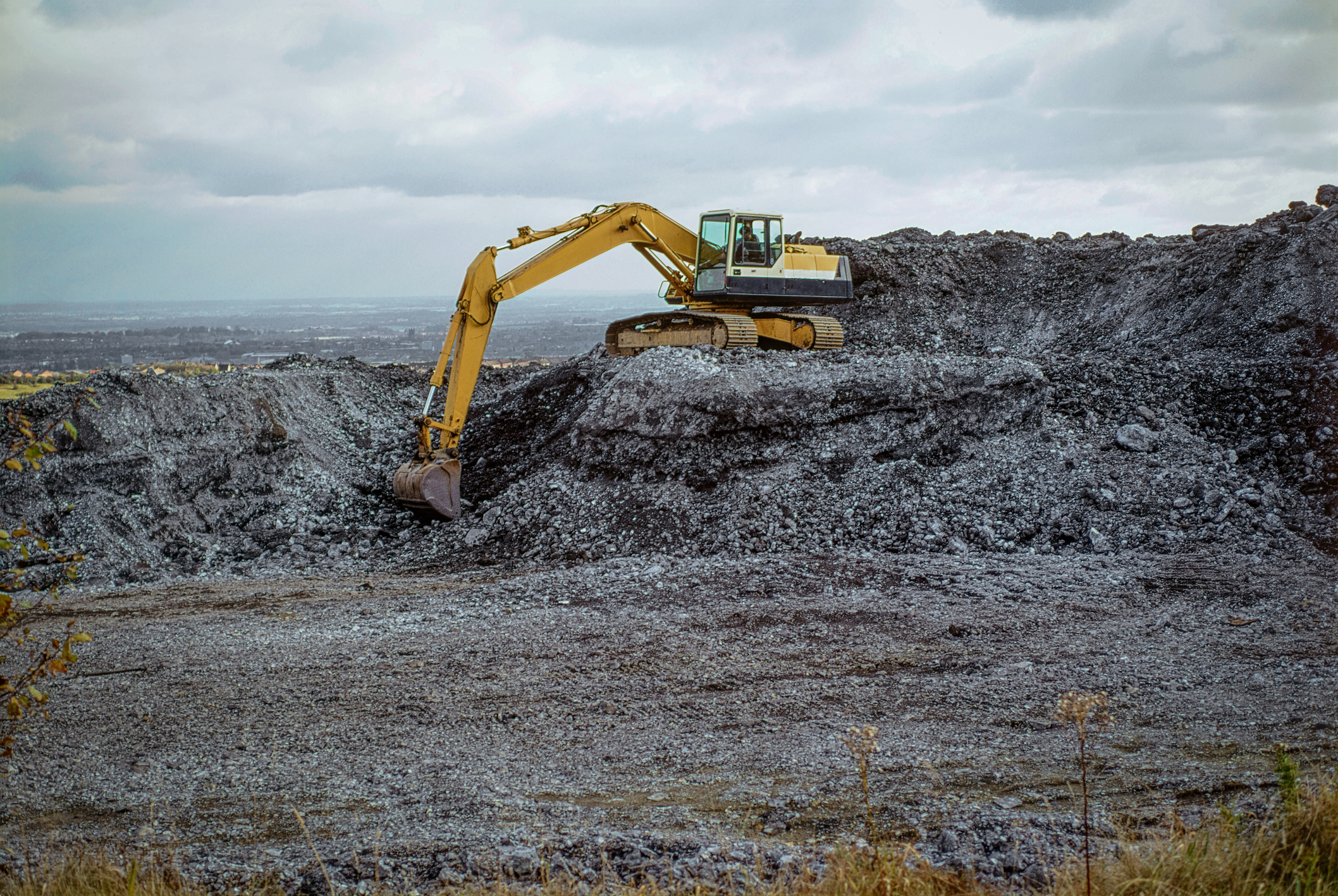Why is Britain's industrial base crumbling?
More and more factories in the UK are closing, and the government doesn’t seem to care. What’s going on?


It looks set to be another difficult month for what remains of Britain’s industrial base. On Monday, we learned that the Ineos-owned Olefins and Polymers (O&P) plant at Grangemouth, in Scotland, the largest in the UK, is at risk of closure. Its CEO warned that a mix of rising energy costs and carbon taxes meant the facility was not likely to be viable for much longer, and its parent company couldn’t support it from profits made elsewhere forever. Ineos has already closed one refinery in Grangemouth.
Hull-based Vivergo Fuels, owned by Associated British Foods, and Britain’s largest producer of bioethanol, has also said it may have to close in September. Last month, the Saudi Arabian firm Sabic, one of the world’s largest petrochemical manufacturers, said it would shut its Olefins 6 cracker plant in Wilton, Teesside, after 46 years of production. Nippon Electric Glass closed down the UK’s largest fibreglass factory in June; in March, production came to an end at Vauxhall’s Luton assembly line after 120 years of production. One by one, the UK’s factories are closing down.
The overall figures are shocking. The chemicals industry has witnessed a 40% decline in output since 2021. Cement production has been falling at a rate of 7% a year since the start of the decade. Car manufacturing is now down to levels last seen in the early 1950s, according to figures from the Society of Motor Manufacturers & Traders. Overall output in the “energy intensive industries”, according to the Office for National Statistics (ONS), has fallen by 35% since 2021, and is now at a 35-year low. It is devastating. The UK has not seen the mass closure of industry on this scale since the Thatcher era in the early 1980s.
MoneyWeek
Subscribe to MoneyWeek today and get your first six magazine issues absolutely FREE

Sign up to Money Morning
Don't miss the latest investment and personal finances news, market analysis, plus money-saving tips with our free twice-daily newsletter
Don't miss the latest investment and personal finances news, market analysis, plus money-saving tips with our free twice-daily newsletter
What is wrong with the UK's industrial base?
It is not hard to work out what has gone wrong. Industrial energy prices have soared. Electricity has risen in price by 75% since January 2021, says the ONS – a crippling rise for most manufacturing firms, where power often accounts for more than half of the total cost base. Industrial energy in the UK now costs 50% more than it does in France, and double what it costs in the US. It is impossible for manufacturers to compete with that kind of difference in costs, no matter how efficient they are.
On top of that, the UK has imposed a bewildering array of green targets and levies that add even more to the cost of production. There is worse to come. A complex system of carbon border credits will charge them for their emissions, and the UK is about to adopt higher EU carbon levies as part of the government’s “re-set” of relations with the bloc. That might help us to hit net-zero, but it will make industry even less competitive.
The cost of employing people has gone up as well with the steep rise in national-insurance charges imposed by the chancellor in the last Budget. It is a lot easier for factories to switch to robots than it is for shops and restaurants, but they still need some workers, and the cost of everyone on the payroll has been increased at the worst possible time. It is clear that not only is the UK’s industrial base collapsing at an accelerating rate, but it is happening largely because of government policies.
That is a tragedy. Britain has a pretty successful industrial base, made up mostly of speciality chemicals, high-end engineering, defence, aerospace and life sciences, all with generous margins, plenty of expertise, and competing successfully on global markets. It accounted for about 10% of GDP, in line with other developed countries. It created plenty of jobs that were typically better paid and more secure than service-industry work, productivity was rising consistently, and it generated lots of exports. It was a vital part of the economy and should have had a bright future.
The mystery is why the government is not concerned. There is hardly any discussion about how to bring down energy costs; the state of the public finances is too dire to contemplate reversing the rise in NI charges; and no one seems to even mention relaxing the net-zero targets. One point is clear: more and more factories will close over the rest of the year – and no one in government seems minded to do anything about it.
This article was first published in MoneyWeek's magazine. Enjoy exclusive early access to news, opinion and analysis from our team of financial experts with a MoneyWeek subscription.
Get the latest financial news, insights and expert analysis from our award-winning MoneyWeek team, to help you understand what really matters when it comes to your finances.
Matthew Lynn is a columnist for Bloomberg, and writes weekly commentary syndicated in papers such as the Daily Telegraph, Die Welt, the Sydney Morning Herald, the South China Morning Post and the Miami Herald. He is also an associate editor of Spectator Business, and a regular contributor to The Spectator. Before that, he worked for the business section of the Sunday Times for ten years.
He has written books on finance and financial topics, including Bust: Greece, The Euro and The Sovereign Debt Crisis and The Long Depression: The Slump of 2008 to 2031. Matthew is also the author of the Death Force series of military thrillers and the founder of Lume Books, an independent publisher.
-
 The shape of yields to come
The shape of yields to comeCentral banks are likely to buy up short-term bonds to keep debt costs down for governments
-
 The sad decline of investment clubs – and what comes next
The sad decline of investment clubs – and what comes nextOpinion Financial regulation and rising costs are killing off investment clubs that once used to be an enjoyable hobby, says David Prosser
-
 The shape of yields to come
The shape of yields to comeCentral banks are likely to buy up short-term bonds to keep debt costs down for governments
-
 The sad decline of investment clubs – and what comes next
The sad decline of investment clubs – and what comes nextOpinion Financial regulation and rising costs are killing off investment clubs that once used to be an enjoyable hobby, says David Prosser
-
 Why pension transfers are so tricky
Why pension transfers are so trickyInvestors could lose out when they do a pension transfer, as the process is fraught with risk and requires advice, says David Prosser
-
 How to profit from the UK leisure sector in 2026
How to profit from the UK leisure sector in 2026The UK leisure sector had a straitened few years but now have cash in the bank and are ready to splurge. The sector is best placed to profit
-
 Who won the streaming wars?
Who won the streaming wars?The battle of the TV and film streaming giants for dominance looks to be entering a final phase. The likely winner may surprise you, says Simon Wilson
-
 'Investors should expect a good year for equities'
'Investors should expect a good year for equities'Opinion The economy is positive, and investors are still cautious, says Max King
-
 8 of the best properties for sale with indoor gyms
8 of the best properties for sale with indoor gymsThe best properties for sale with indoor gyms – from a four-storey mews house in London’s Knightsbridge, to a 1920s Arts & Crafts house in Melbury Abbas, Dorset
-
 Top stock ideas for 2026 that offer solidity and growth
Top stock ideas for 2026 that offer solidity and growthLast year’s stock ideas from MoneyWeek’s columnist and trader, Michael Taylor, produced another strong performance. This year’s stocks look promising too
